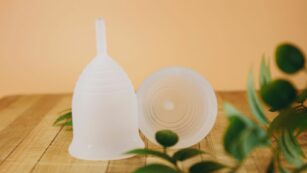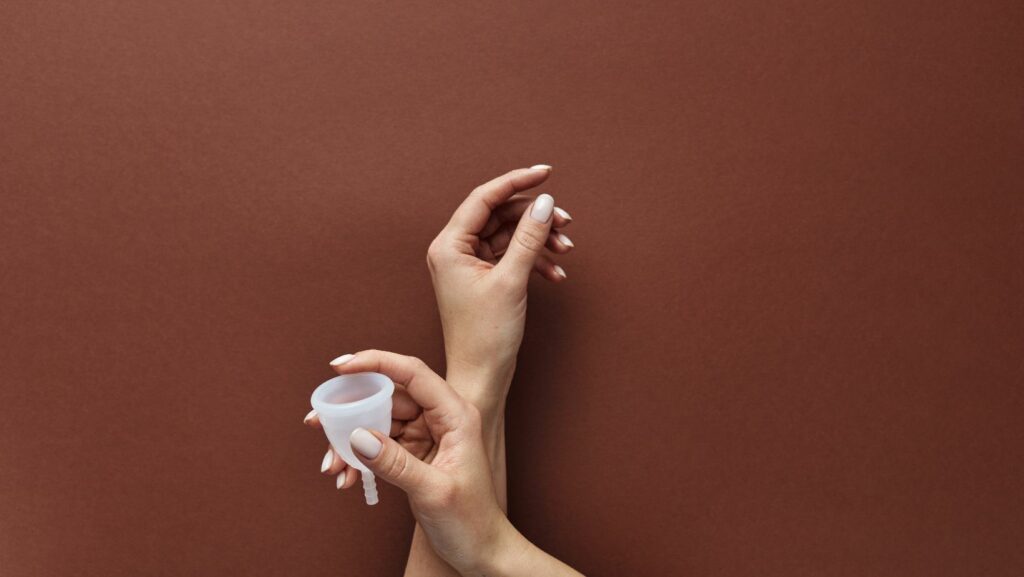Switching to a menstrual cup can be a game-changer for many, offering eco-friendly benefits and longer wear time. However, the initial learning curve can be daunting, especially when it comes to removal. For those new to menstrual cups or even seasoned users looking for a refresher, mastering the art of removal is key to a comfortable experience. Understanding the right techniques for removing a menstrual cup can make all the difference. From finding the right position to breaking the seal effectively, these tips aim to simplify the process and ensure a smooth, hassle-free removal every time.
Tips For Removing Menstrual Cup
 Stay calm during the removal process to avoid discomfort. Relaxing pelvic muscles can make the process smoother. Practice deep breathing exercises before attempting removal if feeling tense. Prevent infections by washing hands thoroughly with soap and water. Clean hands help maintain hygiene and reduce the risk of introducing bacteria into the vaginal area. Find a comfortable position to remove the menstrual cup. Squatting, sitting on the toilet, or standing with one leg elevated are often effective. Experiment to discover which position works best. Avoid pulling the stem directly; it’s crucial to break the seal first. Gently insert a finger alongside the cup, then press on the cup’s base to release the suction. Feel a slight release when the seal breaks. Push the menstrual cup down using the pelvic floor muscles. The bearing down technique helps move the cup closer to the vaginal opening, making it easier to reach and grab. Grip the base of the menstrual cup firmly but gently. Pinching the base helps collapse the cup slightly, easing it out without causing pain or spilling its contents.
Stay calm during the removal process to avoid discomfort. Relaxing pelvic muscles can make the process smoother. Practice deep breathing exercises before attempting removal if feeling tense. Prevent infections by washing hands thoroughly with soap and water. Clean hands help maintain hygiene and reduce the risk of introducing bacteria into the vaginal area. Find a comfortable position to remove the menstrual cup. Squatting, sitting on the toilet, or standing with one leg elevated are often effective. Experiment to discover which position works best. Avoid pulling the stem directly; it’s crucial to break the seal first. Gently insert a finger alongside the cup, then press on the cup’s base to release the suction. Feel a slight release when the seal breaks. Push the menstrual cup down using the pelvic floor muscles. The bearing down technique helps move the cup closer to the vaginal opening, making it easier to reach and grab. Grip the base of the menstrual cup firmly but gently. Pinching the base helps collapse the cup slightly, easing it out without causing pain or spilling its contents.
Step-by-step Guide For Removal
Removing a menstrual cup can seem daunting, but following a precise method can make the process easier and more comfortable. Approach the removal process with patience to avoid discomfort. Start by relaxing in a comfortable position. Squatting or sitting on the toilet often works well. Use your fingers to locate the stem of the cup, then gently pull it down until you can reach the base. Once you can grasp the base, pinch it to break the seal. This action will allow air into the cup, making it easier to remove. If you pull too forcefully without breaking the seal, it may cause discomfort. Gently wiggle the cup side-to-side as you continue to pull it out slowly. Tilting the cup slightly can also help prevent spillage. Encountering issues while removing a menstrual cup can be frustrating. Addressing these common problems helps ensure a smoother experience. Stuck menstrual cups often cause stress. Users should remain calm and relax their pelvic muscles, which makes removal easier. Squatting or sitting on a toilet helps by bringing the cup closer to the vaginal opening. If the cup still doesn’t budge, inserting a finger alongside the cup to break the seal can be beneficial. Pulling directly on the stem isn’t recommended as it can create discomfort; instead, reach for the base and gently pinch.
Approach the removal process with patience to avoid discomfort. Start by relaxing in a comfortable position. Squatting or sitting on the toilet often works well. Use your fingers to locate the stem of the cup, then gently pull it down until you can reach the base. Once you can grasp the base, pinch it to break the seal. This action will allow air into the cup, making it easier to remove. If you pull too forcefully without breaking the seal, it may cause discomfort. Gently wiggle the cup side-to-side as you continue to pull it out slowly. Tilting the cup slightly can also help prevent spillage. Encountering issues while removing a menstrual cup can be frustrating. Addressing these common problems helps ensure a smoother experience. Stuck menstrual cups often cause stress. Users should remain calm and relax their pelvic muscles, which makes removal easier. Squatting or sitting on a toilet helps by bringing the cup closer to the vaginal opening. If the cup still doesn’t budge, inserting a finger alongside the cup to break the seal can be beneficial. Pulling directly on the stem isn’t recommended as it can create discomfort; instead, reach for the base and gently pinch.
Aftercare and Cleaning
 Proper aftercare and cleaning are crucial for maintaining both hygiene and the longevity of a menstrual cup. Once the cup is removed, it should be emptied and rinsed with cold water to prevent stains. Following this, a thorough wash with mild, unscented soap and warm water is recommended. Users should ensure the cup is completely clean before reinsertion or storage. Sterilizing the cup between cycles is also essential. Boiling the cup in water for 5-10 minutes effectively eliminates bacteria. Alternatively, specialized sterilizing solutions or microwave steam bags can be used. Finally, storing the menstrual cup in a breathable bag or container helps maintain its condition. Avoid airtight containers, as they can promote bacterial growth. By adhering to these aftercare and cleaning practices, users can ensure their menstrual cup remains safe, effective, and ready for use each cycle. For a more lubricated experience, try bearing down similar to a bowel movement. Preventing leakage during removal is essential. First, users should ensure the cup is upright to avoid spills. Tilting the cup slightly while maintaining control prevents liquid from escaping.
Proper aftercare and cleaning are crucial for maintaining both hygiene and the longevity of a menstrual cup. Once the cup is removed, it should be emptied and rinsed with cold water to prevent stains. Following this, a thorough wash with mild, unscented soap and warm water is recommended. Users should ensure the cup is completely clean before reinsertion or storage. Sterilizing the cup between cycles is also essential. Boiling the cup in water for 5-10 minutes effectively eliminates bacteria. Alternatively, specialized sterilizing solutions or microwave steam bags can be used. Finally, storing the menstrual cup in a breathable bag or container helps maintain its condition. Avoid airtight containers, as they can promote bacterial growth. By adhering to these aftercare and cleaning practices, users can ensure their menstrual cup remains safe, effective, and ready for use each cycle. For a more lubricated experience, try bearing down similar to a bowel movement. Preventing leakage during removal is essential. First, users should ensure the cup is upright to avoid spills. Tilting the cup slightly while maintaining control prevents liquid from escaping.

